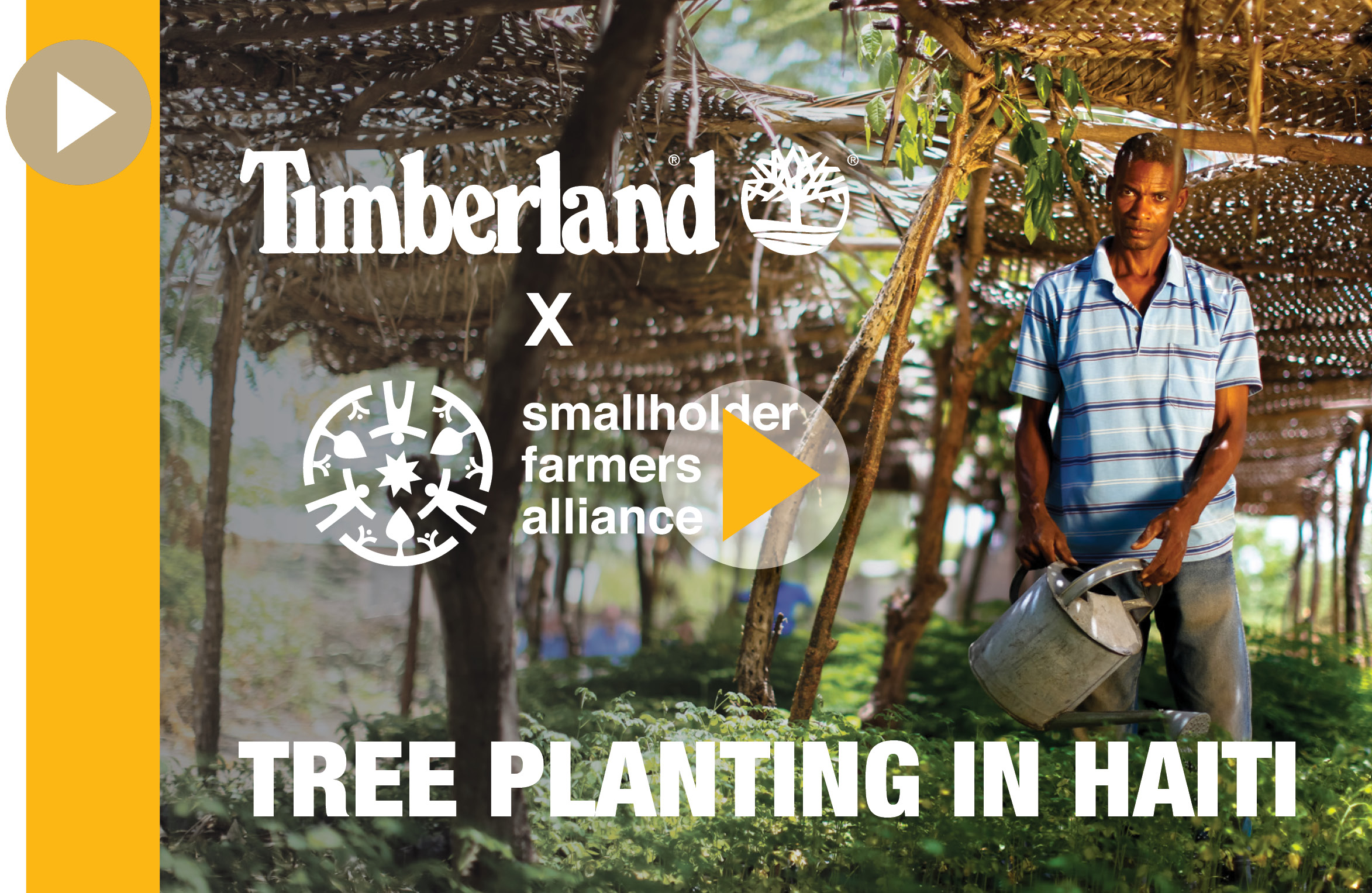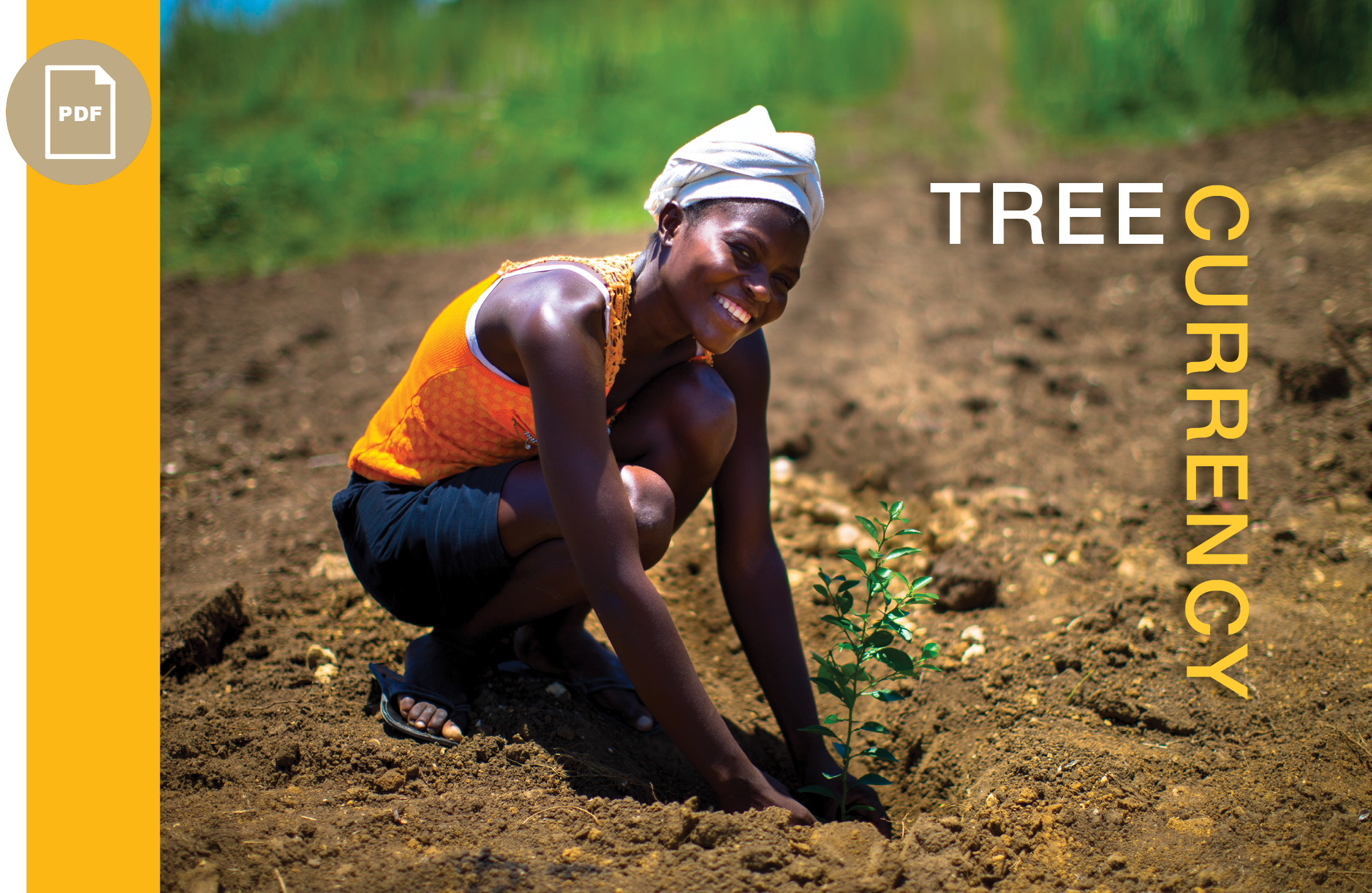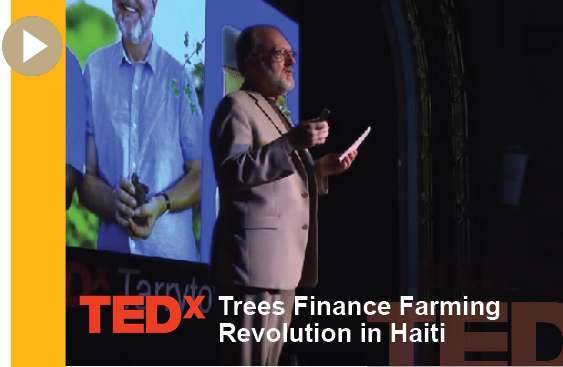 Monday, February 4, 2013 |
Monday, February 4, 2013 |  Hugh Locke
Hugh Locke Fences Alive and Well and Living in Haiti
 SFA member Gustave Laurient prepares to weave the tall branches of a Moringa tree into the
SFA member Gustave Laurient prepares to weave the tall branches of a Moringa tree into the
shorter Jatropha (identified by large leaves) to make a living fence to protect his field near Rofile, Haiti.
SFA photo by Hugh Locke.
We take for granted that when you need a fence, you either buy the material and build it yourself or you hire someone to do the job. For small-scale (also known as “smallholder”) farmers in countries like Haiti, that is not an option. It is simply too expensive. Even something as seemingly frugal as barbed wire strung between posts made from tree branches is beyond their reach. Haitian farmers have come up with a local variation on something that has a long history in many parts of the world: living fences.
In Europe a living fence is often called a hedgerow. In other parts of the world it is known as a hedge or an agricultural fence. But the basic idea is the same no matter where you are: plant trees or shrubs tight enough and tough enough to do the same thing as a manufactured fence.
Living fences in Haiti have an added function in that they are often used to settle land disputes. Smallholder farmers typically have around 1.5 acres of land, or just under 4 acres. There is nobody on hand to survey the borders between adjoining fields, and over time it is common for disagreements to arise involving just a few feet one way or the other. The answer is to come up with a compromise on the exact border, often involving community elders to help solve the matter, and then make it permanent by planting a living fence.
Once in place there are benefits beyond just defining property. Living fences keep ever-present goats from eating your crops. They provide habitat that supports ecological diversity. And they help stabilize the soil, which is particularly important in areas prone to flooding.
The farmer-members of the Smallholder Farmers Alliance in Haiti have taken the creation of living fences to an art form. The 2,000 members of the Alliance currently grow one million trees a year in eight nurseries , and a sizeable number of these are used to make fences. The two most popular varieties for this purpose are Jatropha curcas and Moringa oleifera. Jatropha is actually a dense bush with sharp thorns, while the Moringa is a very fast growing tree. Once it has grown to around ten feet tall, which takes less than a year after having been started as a seed in a nursery, the lanky branches of the Moringa are bent and woven into the stocky foliage of the Jatropha to make a completely impenetrable fence.












Reader Comments